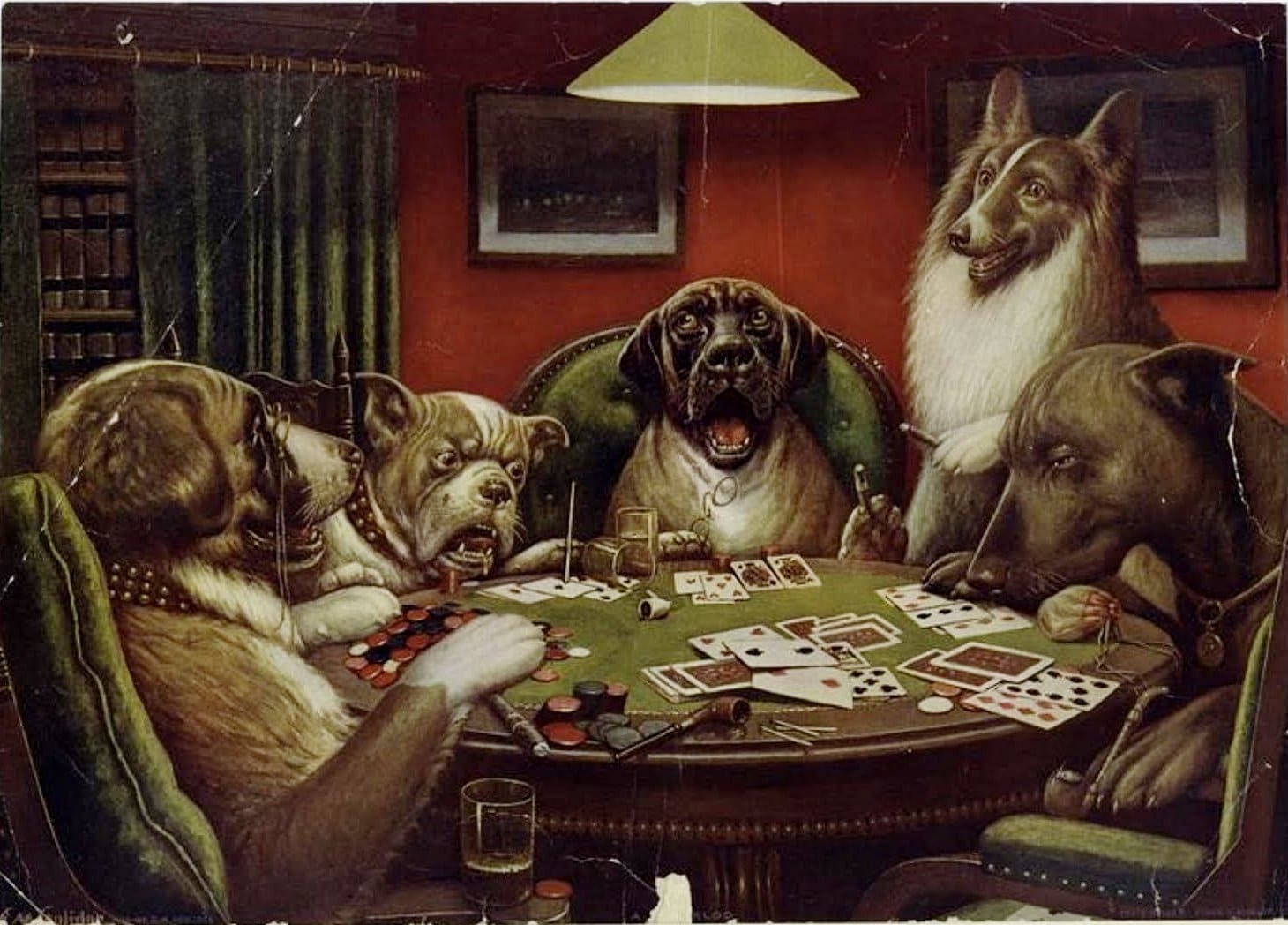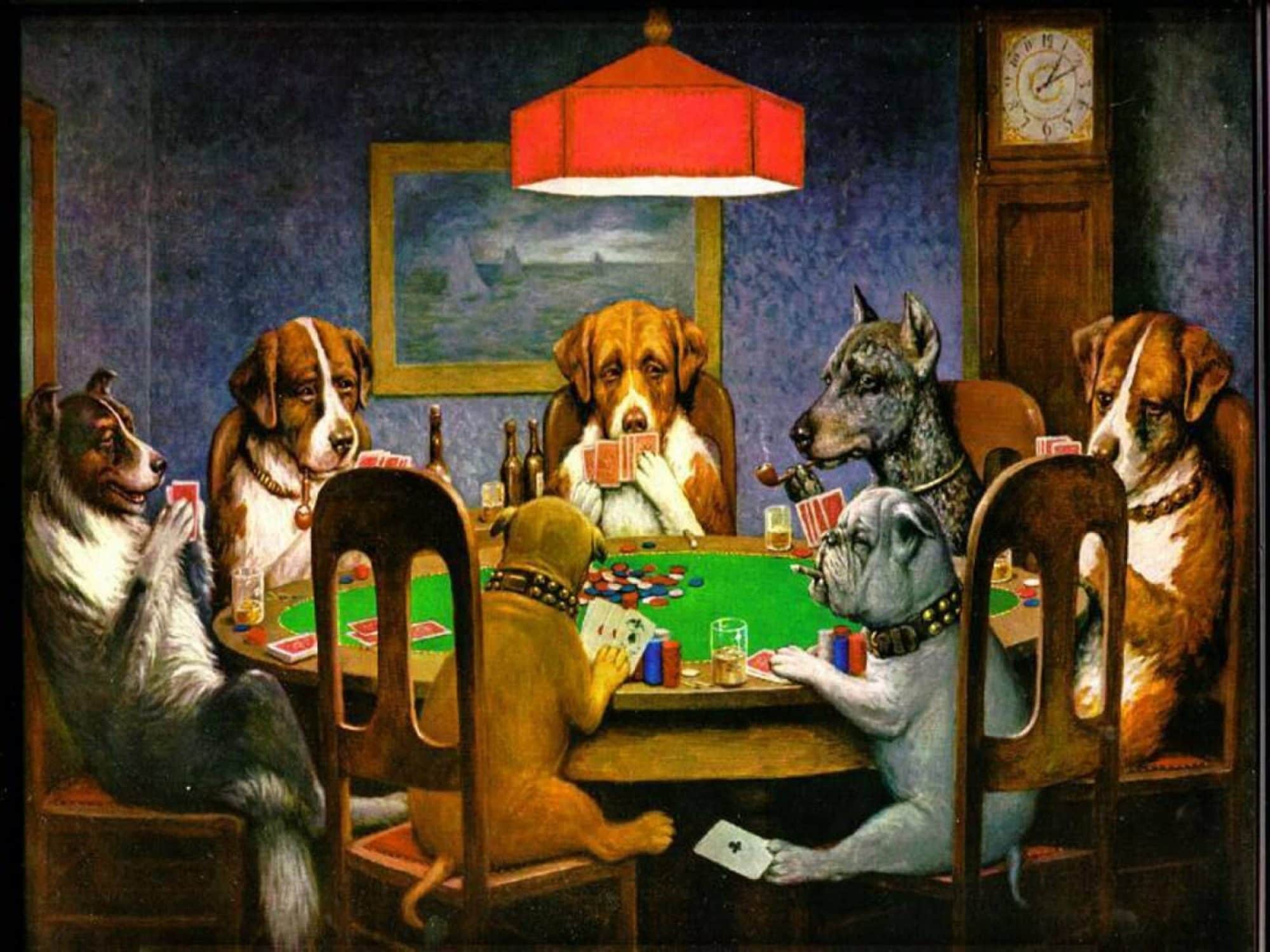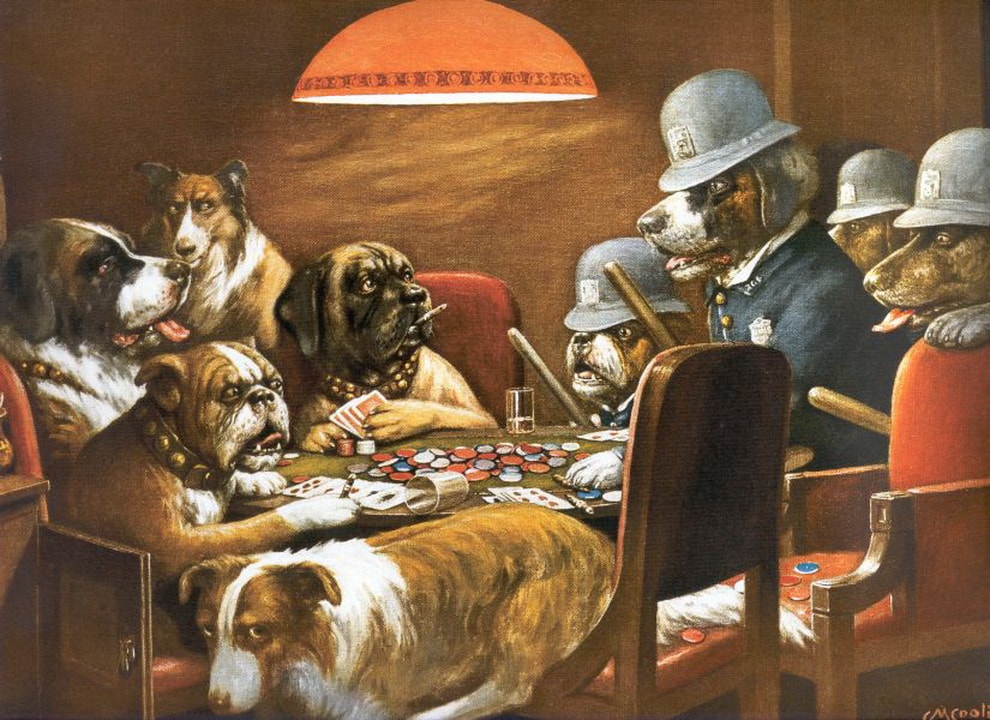Cassius Marcellus Coolidge, a name not as familiar as his art, painted “Dogs Playing Poker,” a series that emerged as one of the most iconic in the last two centuries. Despite his significant contribution to the art world, Coolidge remained largely unrecognized during his lifetime, a consequence of his unconventional career path and the limited acclaim his works received outside of “Dogs Playing Poker.”
Coolidge’s Unique Artistic Flair
Artwork Replication and Influence
“Dogs Playing Poker” stands as one of the most replicated artworks, transcending its original intent to reach a broad audience. A testament to its popularity was its 2018 display on the north tower of the Plaza Hotel & Casino in Las Vegas, symbolizing the entwined nature of art, humor, and casino culture.
The Playful Anonymity
Coolidge often signed his artworks as “Kash” or “Kash Coolidge,” reflecting his eccentric and humorous personality. This whimsical approach to self-identification, while endearing, may have inadvertently limited his reach and recognition in the broader art world.
The Origin of “Dogs Playing Poker”

Birth from Advertising
Contrary to the traditional artistic journey, Coolidge’s most famous series originated from an advertising campaign. Commissioned by Brown & Bigelow, Coolidge created 16 paintings featuring anthropomorphized dogs engaging in various activities, predominantly poker. This list includes notable works like “A Bachelor’s Dog,” “A Friend in Need,” and “Waterloo,” among others.
Early Beginnings and Commission
“Dogs Playing Poker” began as an 1894 painting by Coolidge, but the series’ fame grew with the commission of sixteen oil paintings in 1903 by Brown & Bigelow for cigar advertisements. Coolidge’s work encapsulates an imaginative blend of human-like dogs engaging in poker, a theme that resonated with the American public.
A Portfolio of Unique Artworks
Among these, the painting titled “Poker Game” (1894) stands out, having fetched a remarkable $658,000 at a 2015 auction. The series includes other notable titles like “Pinched with Four Aces” and “A Friend in Need,” each depicting dogs in various scenarios revolving around poker and other social activities, thus offering a satirical take on human interactions and vices.

The Inventor of a Motif
Coolidge claimed to have invented the “Dogs Playing Poker” motif, a statement not officially recognized by authoritative sources but widely attributed to him, given the distinctive style and theme of his work.
The advertising firm commissioned Coolidge to create 16 paintings for their advertising calendar. He came up with the anthropomorphic dogs as a humorous basis for his series. Included in the series were:
● A Bachelor’s Dog – reading the mail
● A Bold Bluff – poker
● A Friend in Need – poker, cheating
● Breach of Promise Suit – testifying in court
● His Station and Four Aces – poker
● New Year’s Eve in Dogville – ballroom dancing
● One to Tie Two to Win – baseball
● Pinched with Four Aces – poker, illegal gambling
● Poker Sympathy – poker
● Post Mortem – poker, camaraderie
● Riding the Goat – Masonic initiation
● Sitting up with a Sick Friend – poker, gender relations
● Stranger in Camp – poker, camping
● Ten Miles to a Garage – travel, car trouble, teamwork
● The Reunion – smoking and drinking, camaraderie
● Waterloo – poker

Cultural Impact and Reception
Kitsch Art and Symbolism
“Dogs Playing Poker” has been ingrained in the American psyche, often regarded as a prime example of kitsch art. Annette Ferrara, an art critic, described the series as indelibly burned into the American collective consciousness, symbolizing a unique blend of humor, satire, and Americana.
Pop Culture and Media References
The series’ influence extends beyond the art world into popular culture, with references in television shows like “Cheers,” “The Simpsons,” and films like “The Thomas Crown Affair.” These appearances underscore the paintings’ enduring appeal and cultural significance.
Coolidge’s Artistic Legacy
Stylistic Influences
Coolidge’s work shows influence from renowned artists like Caravaggio and Cézanne, yet his unique approach in anthropomorphizing dogs sets his work apart. His ability to infuse humor and human traits into animal subjects creates a distinctive style that continues to captivate audiences.
Artistic Recognition and Value
While initially created for advertising, these paintings have gained recognition in the art world for their unique style and cultural significance. The high auction prices of original pieces, like the 2005 sale of “A Bold Bluff” and “Waterloo” for $590,400, reflect their growing appreciation as collectible art pieces.
Coolidge’s Artistic Legacy
Beyond “Dogs Playing Poker”
Apart from this series, Coolidge’s other significant work was “Kelly Pool” (1909). Although his artistic contributions were vast, it was only posthumously that his works gained significant attention and acclaim.
Auction Success and Recognition
The 2006 auction of “A Bold Bluff” and “Waterloo” for nearly $600,000, far exceeding expectations, marked a turning point in the recognition of Coolidge’s work. This record was later surpassed by the sale of “Poker Game” for $658,000 in 2015, highlighting the growing appreciation of his art.
A Legacy Rediscovered
Cassius Marcellus Coolidge, through his “Dogs Playing Poker” series, created a legacy that outlived his anonymity. His unique approach to art, blending humor with a keen observation of society, continues to resonate and gain recognition, proving that true artistic brilliance often transcends the boundaries of time and conventional acclaim.





